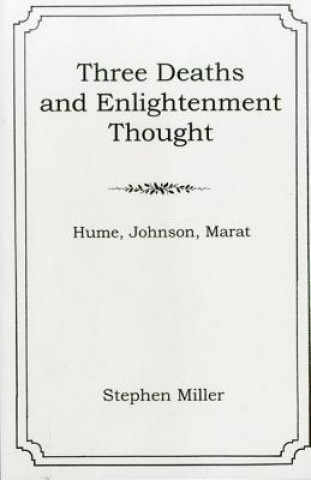
Kód: 05091912
Three Deaths and Enlightenment Thought
Autor Stephan Miller
In recent years there has been an extended debate about Enlightenment thought. Though many scholars have concluded that there were several "Enlightenments," some continue to make generalizations about the Englightenment and some s ... celý popis
- Jazyk:
 Angličtina
Angličtina - Vazba: Pevná
- Počet stran: 219
Nakladatelství: Bucknell University Press, 2001
- Více informací o knize

2994 Kč

Skladem u dodavatele v malém množství
Odesíláme za 10-14 dnů
Potřebujete více kusů?Máte-li zájem o více kusů, prověřte, prosím, nejprve dostupnost titulu na naši zákaznické podpoře.
Přidat mezi přání
Mohlo by se vám také líbit
-

Surveys in Combinatorics 2005
2096 Kč -

Ship
373 Kč -

Student's Oxford Canadian Dictionary
514 Kč -

From Chaos to Order
821 Kč -

Nobel Lectures In Physiology Or Medicine 2001-2005
854 Kč -

Life and Death of Sir Thomas Moore, ... Written by William Rooper, ... to Which Are Added from Sir Thomas's English Works Some Letters of His, &C. Ref
725 Kč -

King's Highway
1458 Kč
Dárkový poukaz: Radost zaručena
- Darujte poukaz v libovolné hodnotě a my se postaráme o zbytek.
- Poukaz se vztahuje na celou naši nabídku.
- Elektronický poukaz vytisknete z e-mailu a můžete ihned darovat.
- Platnost poukazu je 12 měsíců od data vystavení.
Více informací o knize Three Deaths and Enlightenment Thought
Nákupem získáte 299 bodů
 Anotace knihy
Anotace knihy
In recent years there has been an extended debate about Enlightenment thought. Though many scholars have concluded that there were several "Enlightenments," some continue to make generalizations about the Englightenment and some speak about "the Enlightment agenda." After discussing the cult of the deathbed scene in eighteenth-century Britain and France, the author looks at three currents of Enlightment thought implicit in the deathbed "projects" of David Hume, Samuel Johnson, and Jean Paul Marat. Although Hume and Johnson hold profoundly different views of religion, their political thinking has much in common. Their reformist thought differs radically from what might be called the transformist thought of Marat, who hoped the French would become disinterested citizens whose civil religion was patriotism. The author argues that Enlightment thought was more varied and-in its reformist current-less hostile to tradition than many observers have allowed. Enlightment thought was less a cluster of ideas than a debate about a number of questions, especially the following: how to contain religious and secular fanaticism (or what was called enthusiasm); what are the effects of luxury; and what is the nature of the passions. There was, as J.G.A. Pocock says, "a family of Enlightments," and "there is room for the recognition of family quarrels..." Why look at deathbed scenes to chart the currents of Enlightment thought? Because an interest in deathbed scenes was widespread in eighteenth-century Britain and France. The final days of Hume stirred up a controversy that lasted for at least a decade and the final days of Johnson also attracted a great deal of attention, but Marat's death had the greatest impact of the three. His assassination gave impetus to the Jacobins' attempt to eliminate the influence of the church and greatly expand the influence of the state. Marat's project to transform France failed, but so did the projects of Hume and Johnson. Hume argued that religious belief was based on the foolish fear of
 Parametry knihy
Parametry knihy
Zařazení knihy Knihy v angličtině Humanities Philosophy
2994 Kč
- Plný název: Three Deaths and Enlightenment Thought
- Podnázev: Hume, Johnson, Marat
- Autor: Stephan Miller
- Jazyk:
 Angličtina
Angličtina - Vazba: Pevná
- Počet stran: 219
- EAN: 9781611481402
- ISBN: 1611481406
- ID: 05091912
- Nakladatelství: Bucknell University Press
- Hmotnost: 494 g
- Rozměry: 244 × 168 × 18 mm
- Datum vydání: 01. July 2001
Oblíbené z jiného soudku
-

Thus Spoke Zarathustra - The Philosophy Classic
306 Kč -

From Bacteria to Bach and Back
452 Kč -

Men Among the Ruins
583 Kč -
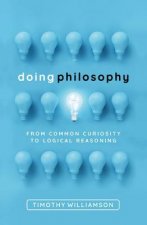
Doing Philosophy
399 Kč -

Difference and Repetition
633 Kč -

The Conspiracy Against the Human Race
413 Kč -
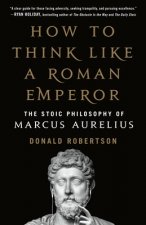
How to Think Like a Roman Emperor
402 Kč -

Teachings of Don Juan
223 Kč -

The Story of Philosophy
342 Kč -

I am That
1021 Kč -
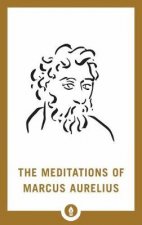
Meditations of Marcus Aurelius
276 Kč -

Monkey Business
431 Kč -

Aristotles Revenge
748 Kč -
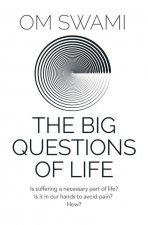
Big Questions of Life
312 Kč -

Musonius Rufus
409 Kč -
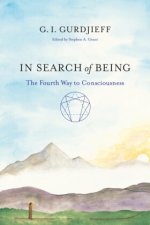
In Search of Being
554 Kč -

Nature
185 Kč -
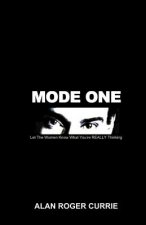
Mode One
630 Kč -
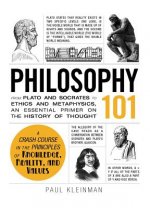
Philosophy 101
338 Kč -

Nomadology - The War Machine
341 Kč -
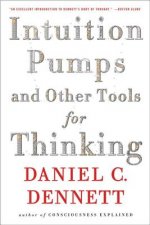
Intuition Pumps and Other Tools for Thinking
538 Kč -

From Intellect to Intuition
361 Kč -

Omnibus Homo Sacer
2847 Kč -

Mystery of Evil
542 Kč -

Daily Reflections
160 Kč -

Return to the One
462 Kč -

Desire/Love
466 Kč -

Nuclear Physics
434 Kč -

Western Philosophy: An Anthology, 3rd Edition
1196 Kč -

Built to Last
410 Kč -
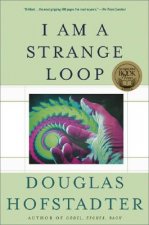
I Am a Strange Loop
475 Kč -

Letters from a Stoic - The Ancient Classic
294 Kč -
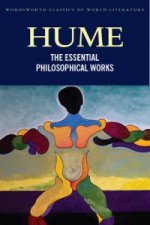
The Essential Philosophical Works
136 Kč -

How the World Thinks
316 Kč -
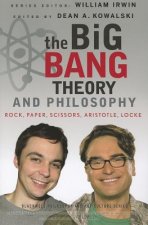
Big Bang Theory and Philosophy - Rock, Paper, Scissors, Aristotle, Locke
485 Kč -

Wisdom of Yoga
378 Kč -

Breaking Bad and Philosophy
538 Kč -

Sacred Dance Meditations
580 Kč -

Hyperculture: Culture and Globalisation
442 Kč -

Escape from Evil
485 Kč -

Imitation of Christ
117 Kč -

Machiavelli: The Art of Teaching People What to Fear
419 Kč -

Religion of Tomorrow
746 Kč -

Calendar of Wisdom
539 Kč -

Meditations of Marcus Aurelius
345 Kč -

Mortal Questions
399 Kč -
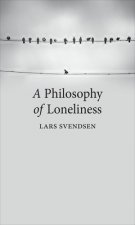
Philosophy of Loneliness
475 Kč -

Oxford Companion to Philosophy
887 Kč -

Contingency, Irony, and Solidarity
586 Kč
Osobní odběr Praha, Brno a 12903 dalších
Copyright ©2008-24 nejlevnejsi-knihy.cz Všechna práva vyhrazenaSoukromíCookies


 Vrácení do měsíce
Vrácení do měsíce 571 999 099 (8-15.30h)
571 999 099 (8-15.30h)